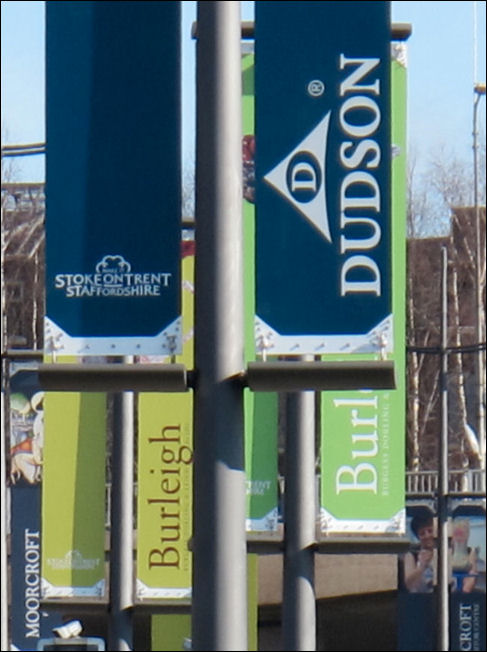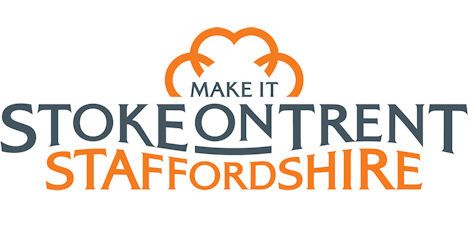|
MP for Stoke Central, Tristram Hunt, and Matthew Rice of Emma Bridgewater, pulled together a number of local movers and shakers – including ‘Sir’ Peter Coates, Mike Wolfe, and Mohammed Pervez – for a debate on the economic future of Stoke-on-Trent, hosted by Emma Bridgewater at Eastwood Works on Lichfield Street, Hanley.
I was honoured to receive an invitation, and we were joined by Will Hutton, author and Observer columnist amongst other things; Mike Emmerich, a former Downing Street policy adviser, and now Chief Executive of New Economy in Manchester, who talked about what Stoke-on-Trent can learn from the Manchester experience; and finally Ben Page, Chief Executive of IPSOS/MORI, who discussed emerging economic trends, and how our city may take advantage. We should be grateful to Tristram for having pulled this off.
All three speakers were
passionate, brave, humorous, but above all, positive and upbeat about our city’s prospects. But the message was clear; those in the room, policy makers, politicians, business men and women, were all going to have to work very hard, and display what the city has lacked over the years: positive leadership.
Whilst all three speakers were impressive and entertaining, the discussion that struck a chord with me was Mike Emmerich’s talk around the Manchester experience. Mike pointed out that the one thing that the Potteries cannot replicate is the scale of the Manchester City Region: ten large districts all pulling in the same direction, fighting the same cause regardless of political colours. However, there are still many lessons that Stoke-on-Trent can learn from the world’s first industrial city.
When I think about Stoke-on-Trent’s current economic position, I think back to Manchester post the Moss Side riots (it is the thirtieth anniversary of the weekend-long tear up next month). Manchester was part of Labour’s heartlands: cut Manchester and it would definitely have bled red! But in reflecting on the riots, the city recognised that it HAD to change its ways: its traditional industries were dead or dying, and people were leaving the city in droves.
The city’s response was revolutionary, in its own way. It worked in a co-operative manner with Thatcher’s Tory Government and the private sector, and attracted hundreds of millions of pounds of investment. This laid the foundations for the Manchester that we know today. Compare this with say, Liverpool’s stance with Thatcher’s Tories…
It was also the start of an era of political stability in the city, and indeed, many of the civic leaders that led Manchester out of the darkness are still around today, thirty years on: Chief Executive Sir Howard Bernstein, who is widely credited – correctly – for providing the drive and leadership that has delivered Manchester’s renaissance began his career at the City Council in 1972 as a clerk, whilst current leader of the Council, Sir Richard Leese, was also an influential player back in the early 1980s.
So what am I saying? I’m saying that I believe that our own civic leaders here in Stoke-on-Trent need to set aside political differences for the good of our city region, and – as much as this may pain the City Council’s newly formed Labour cabinet – be prepared to work positively and proactively with the Coalition to attract private sector investment, and use their skills and influence to generate what Will Hutton has described as “good capitalism”. They also need to avoid the kind of bitching and in-fighting that has dogged the party locally in the past. Having spoken with the leader of the Council, Mohammed Pervez – who greatly impressed me – I have a quiet confidence that this is achievable.
Last year it was revealed that around 20% of jobs in Stoke-on-Trent were provided by the public sector, and that almost 40% of the city’s working population were “economically inactive”. In addition, the City Council was amongst the top ten local authorities worst affected by cuts in public spending.
This means that Stoke-on-Trent is a place that should receive support from the Government given their commitment to tackle such issues. Our political leaders must embrace this support, and look to grow the private sector and deliver new jobs and investment.
In addition, and I have said this many, many times in the past, the city has got to start to properly capitalise on its strategic location mid-way between Manchester and Birmingham. We are the bridge between the Midlands and the North, sat on the “electrified Branson Line” (thank you Matthew!). Think about the economic miracle that has been Warrington, who successfully promoted themselves as the ‘Crossroads Town’, sat alongside the M62 and M6, Liverpool and Manchester’s half-way house. The town has boomed, and OK, whilst it has been an economic miracle, it can be argued that it has been an environmental disaster due to the car-centric approach to its planning. But we can learn from that, we could do the same, but different. Better. Smarter.
And we shouldn’t discount the role that culture can play in economic renaissance. Mike Wolfe recently wrote in the Sentinel of Hanley’s Cultural Quarter, and opined that the city ought to dust down the original strategy, and revive and complete the initiative, and that its completion would not be about expensive “grand projects”, but would be more about creating the right environment to allow creative people to thrive. I have a lot of time for Mike, but don’t always agree with things that he writes. However, in this respect, I think he is bang on the money.
Turning back to the Manchester experience, I think about the part that the city’s musicians have played in its rebirth. Dirty, grimy Manchester became cool again on the back of a musical explosion. Following the Sex Pistols’ infamous gig at the Free Trade Hall, we saw the emergence of Joy Division, and the Smiths. Following the tragic suicide of Joy Division front man Ian Curtis, we saw the band re-emerge as New Order, who gave us the biggest selling 12” single of all time in ‘Blue Monday’.
The late, great Tony Wilson formed Factory Records, and opened the Hacienda in a former yacht showroom, of all places. The club’s popularity giving birth to the Acid House scene that had its roots in the ruins of the nearby Hulme Crescents, where people like A Guy Called Gerald held local (and probably illegal) raves. From the Acid House movement, the Madchester bands, the most prominent of which were the Happy Mondays and the Stone Roses – the Beatles and the Stones of the movement – delivered a legacy of great albums, though the Happy Mondays eventually finished off an increasingly precarious Factory Records, and the Stone Roses disintegrated following a five year hiatus between their astounding debut and their ‘Second Coming’.
The influence of the Madchester years was felt in the mid-1990s, with the emergence of Oasis, and the feuding Gallagher brothers, who took Ian Brown’s confident arrogance (“kiss me where the sun don’t shine, the past is yours but the futures mine”) to another level, and made being northern, cocky and mouthy cool. This led to the increasing popularity of the city’s universities, as young students – attracted by Manchester’s thriving music scene – poured into the city. Some never went home, and have made Manchester their adopted home, populating trendy apartment blocks and converted mills – made attractive by the likes of Urban Splash, whose founder Tom Bloxham started his career in the city, selling posters.

Moorcroft, Burleigh,
Dudson - Made in Stoke-on-Trent, Staffordshire
Can we stimulate a similar creative explosion here in Stoke-on-Trent? It doesn’t have to be musical trends that spark a cultural revolution; the point is, these were creative people: we have such people here in the Potteries – people like Emma Bridgewater, Jon and Adrian at Moorland Pottery in Burslem, companies like Portmeirion that rely on the city’s traditional skills and creativity, and the many studio potters and ceramic artists that are dotted around the area here and there.
Yes, the much-maligned pottery industry is one of the world’s great creative industries, and its heartland is Stoke-on-Trent, the Potteries. The Potteries is full of skilful, artistic and creative people, all local, using and continuing to develop skills that were born in the area: we must not allow those skills to die!
The pottery industry has been written off by many over the past few decades, but I would argue that its death has been greatly exaggerated. When people think about ceramics, they think about the Potteries, and in planning a new economic future for Stoke-on-Trent and North Staffordshire, the pottery industry must be at its heart. I hope that the new Local Economic Partnership takes note.

Britannia Stadium -
home of Stoke City Football Club
And what else can we learn from Manchester? One of the biggest accelerators of urban regeneration in the city was the hosting of the 2002 Commonwealth Games, widely acknowledged as one of the best in the history of the games. Now Stoke-on-Trent is highly unlikely to host a Commonwealth Games or similar, but it has a Premiership football club in Stoke City, which attracts almost 3,000 visitors to the city every other week during the football season. What are we doing to capitalise on the Potters’ rise to football’s top table, and the many visitors they attract from all around the country, and this coming season, from Europe?
One thing I can say is the perception of Stoke City as a football club is changing, as is the view of the club’s supporters. A colleague of mine in Manchester is a supporter of Manchester City, and following the FA Cup Final, he emailed me to tell me what a credit to the city and the football club Stoke City’s supporters were. He had stopped at a service station on the way back from Wembley with his young son, and was filled with trepidation as he saw the place swarming with defeated and deflated Stokies. He needn’t have worried: many supporters shook him by the hand and congratulated him on Manchester City’s victory, and were – in his words – “brilliant” with his son. As well as the email to me, he also emailed the club. In addition, the Britannia Stadium is widely acknowledged to have the greatest atmosphere in the Premiership, with the club’s supporters displaying a passion for their club that puts the aristocrats at say, the Emirates to shame. We will always have the odd lunatic, but the majority are good, decent people, and that message is resonating throughout the game, and this reflects positively on the city.
But while we are at it, let’s not forget about Port Vale, who do some fantastic work in the community, and our thriving local non-league scene.

Lastly, we all need to do a lot more to talk Stoke-on-Trent and North Staffordshire up; the city region needs a lot of TLC, admittedly, but the place has so much going for it! Superb transport links. Surrounded by stunningly beautiful countryside. A potentially sustainable linear city structure. A unique, but sadly under-valued, built heritage. Some great cultural facilities. Great football clubs.
A couple of years or so ago, the City Council launched a branding exercise for the area – Make it Stoke-on-Trent, or something along those lines. Well I say let’s MAKE Stoke-on-Trent.
David
Proudlove
June 2011

|
![]()
![]()
![]()
